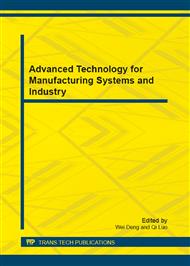p.422
p.428
p.434
p.439
p.443
p.448
p.454
p.459
p.464
Resistance to Impact Load Analysis of a Novel Magnetorheological Damper
Abstract:
In this paper a new MR damper presents, every stage coil connection is independent. The fluid channel congestion and single axial magnetic field problems, existing on the old MR damper worked under the high impact load were solved. With this connection type, MR damper can generate an axial time–varying magnetic field with different input current every stage. The MR damper’s electromagnetic model was built, and the simulation analysis of new and old MR damper under impact load based on the PID control algorithm was finished. According to the simulation results, compared the anti-impact-load performance between new and old damper. The results show that working on the same impact load, the newly designed MR damper can reduce the displacement and the energy consumption simultaneously compared to the prior damper.
Info:
Periodical:
Pages:
443-447
Citation:
Online since:
November 2012
Authors:
Price:
Сopyright:
© 2012 Trans Tech Publications Ltd. All Rights Reserved
Share:
Citation:


